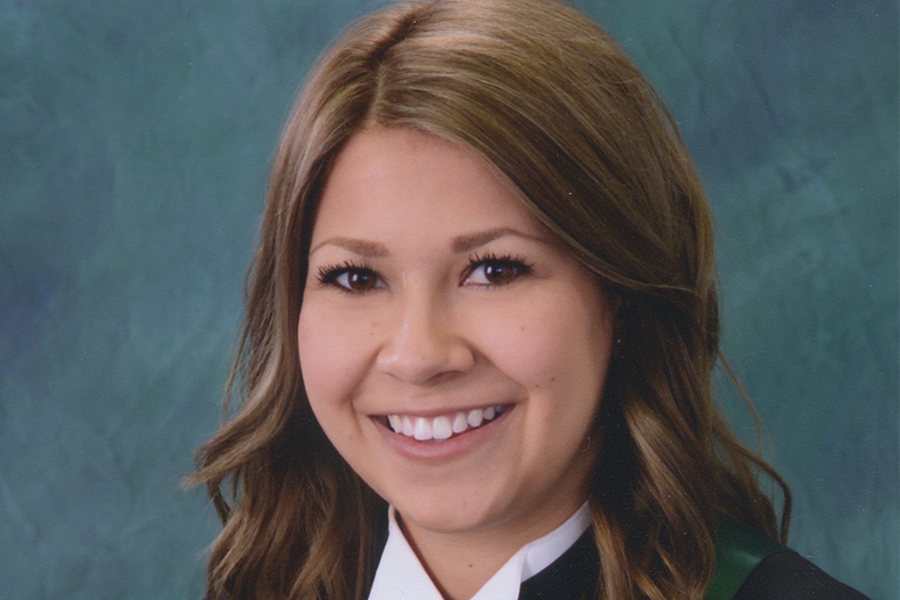
St. Denis-Katz leads class of Aboriginal MD graduates
The University of Saskatchewan helped change her life and Hannah St. Denis-Katz is now more determined than ever to help change the lives of others.
By James ShewagaThe 23-year-old from Saskatoon became the first in her family and the first from her First Nations community of Beardy’s and Okemasis to earn a medical degree when she graduated with a Doctor of Medicine on the final day of U of S Spring Convocation Thursday at TCU Place.
“I know that (Beardy’s and Okemasis) has been quite proud and very supportive of my education and I think I have been quite fortunate to have had all the support that I have had,” said St. Denis-Katz, whose mother Verna St. Denis is also U of S graduate and a professor in the Department of Educational Foundations. “It is really exciting to get my first degree and to be the first in my family to become a doctor. And I’m looking forward to residency, which I will be doing in Ottawa starting in plastics and reconstructive surgery, which is my dream career. So that is really, really exciting.”
Only 23 MD graduates in the country are accepted into residency programs in plastic surgery each year, making it one of the most competitive programs in Canada. It did not take long for St. Denis-Katz to realize that was the particular medical field that she wanted to specialize in.
“In my second year of medicine, I fell in love with plastics and reconstructive surgery, I think in part related to my interest in art and painting, but also just the complexity and the diversity of the field,” she said. “I did a project two summers ago that looked at the barriers and perceptions of breast reconstruction in Aboriginal women and I worked on a project in Calgary researching and interviewing women and then I ended up presenting at the Canadian Society of Plastic Surgeons annual meeting in 2015.”
While the vast majority of plastic surgeons are based out of large urban centres, St. Denis-Katz does hope to help provide support for Aboriginal and rural communities as well in the future.
“There is definitely a need in the smaller communities,” she said. “What I am hoping to do is to find a way to make my career working in a big centre while also doing rural clinics or somehow providing support in some of the rural communities to help address the transportation issues that they face.”
St. Denis-Katz has quickly become a role model in the local Aboriginal community, one of 10 of this year’s 89 MD graduates in the College of Medicine who are First Nations, Métis or Inuit students.
“I think that is phenomenal,” she said. “Across the country, our college has some of the highest numbers of Aboriginal people entering the College of Medicine, so I think that is something to be really, really proud of. And it is definitely something that I share when I’m going across the country, that we are fortunate to have that many seats allocated to Aboriginal students.”
This year’s 10 Aboriginal MDs (accounting for 11.2 per cent of the total class) are among 394 self-declared Aboriginal students who graduated from the U of S this spring, the largest class of First Nation, Métis and Inuit students in university history.
“This is another exceptional class of MD graduates and we are especially excited about our impressive contingent of Aboriginal medical students who are graduating this spring,” said Dr. Preston Smith, dean of the College of Medicine. “We are committed to leading Canadian medical schools in support systems and programming for First Nations, Métis and Inuit students. And we are proud to celebrate Aboriginal student achievement, which is one of our priorities on campus.”
In total, there has been a 53.5 per cent increase in Aboriginal graduates at U of S Spring Convocation over the past five years, with this year’s group part of the 3,422 students who made up the second-largest graduation class in school history. They now join a family of close to 150,000 U of S alumni world-wide.

